Tesla Autopilot – a name that’s become almost synonymous with innovation, thanks to Elon Musk’s influence and the high-profile Tesla brand behind it.
In an interview, Musk explained that when you purchase a Tesla, you're essentially acquiring something that increases in value over time.
This is what made people question, how much does it cost to create an AI driver assistance system like Tesla Autopilot?
The cost to build an AI agent like Tesla Autopilot is $30,000 to $250,000+. We will disclose every detail about it.
As the world races toward fully autonomous vehicles, companies like Tesla are pushing the envelope with driver assistance systems that promise to make our roads safer and smarter.
From the massive investments in cutting-edge sensors and AI algorithms to the constant software updates, building such a system is no small task.
In this blog, we’ll break down the hidden costs behind creating a Tesla-like Autopilot system, revealing complete details about it.
Ready to take the wheel? Let’s dive in!
An Inside Look at Tesla Autopilot
Before we get to know the cost to create an AI agent like Tesla Autopilot, we sure should look into the overview of Tesla Autopilot.
Elon Musk introduced the concept of Tesla Autopilot in 2013, stating,” Autopilot is a valuable feature in airplanes, and we should bring it to cars as well.”
At its core, Autopilot is an advanced driver-assistance system (ADAS) that uses a combination of cameras, radar, ultrasonic sensors, and sophisticated AI algorithms to handle tasks like steering, acceleration, and braking.
This allows the car to manage certain driving functions, such as navigating highways, maintaining speed, and changing lanes with minimal input from the driver.
Over time, Tesla has pushed continuous software updates to improve its capabilities, inching closer to full autonomy with the goal of achieving Level 5 self-driving in the future.
It’s a true game-changer in the automotive world, promising safer, smarter driving experiences.
Tesla reports that when Autopilot was active, there was one accident for every 7.44 million miles driven.
In contrast, for drivers not using Autopilot, the rate was one crash for every 1.51 million miles driven.
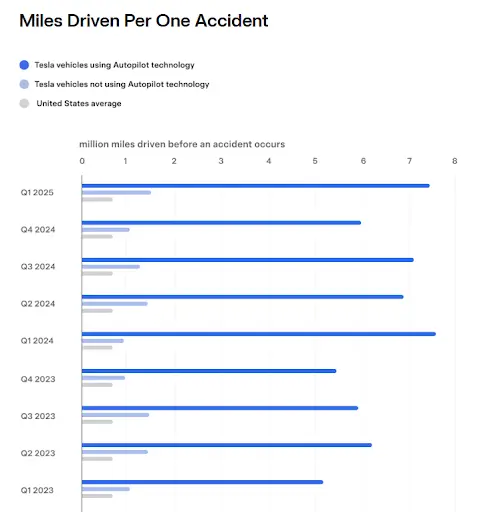
How Much Does it Cost to Create an ADAS System like Tesla Autopilot?
If you are wondering how much does it cost to build an AI agent like Tesla Autopilot, the brief answer can go from $30,000 to $250,000+.
Well, it’s not just a price tag, it’s an investment in cutting-edge technology.
Developing an ADAS system like Tesla involves integrating advanced sensors (cameras, radar, LiDAR), artificial intelligence algorithms, and continuous software updates.
Beyond hardware and software, the testing and regulatory compliance add to the overall expenses.
However, the benefits, improved safety, efficiency, and a seamless driving experience, make the investment worthwhile, as we edge closer to a fully autonomous driving future.
|
Development Component |
Details |
Cost Impact |
|
AI Algorithm Development |
Designing and implementing artificial intelligence for decision-making, object recognition, and navigation. |
High impact on overall cost due to complexity and customization needs. |
|
Sensor Integration |
Integration of sensors (cameras, radar, LiDAR) for real-time data processing. |
Significant cost due to the need for high-quality, reliable sensors. |
|
Data Processing Infrastructure |
Development of systems for processing large amounts of data from sensors in real time. |
Moderate impact as it involves specialized computing hardware and storage. |
|
Writing and refining software for driving assistance features like lane-keeping and adaptive cruise control. |
High impact as ongoing updates and feature enhancements are required. |
|
|
Testing & Simulation |
Extensive simulation testing and real-world trials for reliability and safety. |
Medium impact due to the time-intensive nature of testing and simulations. |
|
Regulatory Compliance |
Ensuring the system meets safety and legal standards, which vary based on location. |
Medium impact as costs vary depending on the region and regulations. |
|
Project Management & Overheads |
Cost of coordinating and managing the entire development process. |
Medium to high impact depending on project scale and management complexity. |
Factors Affecting the Cost to Build an ADAS Platform like Tesla Autopilot
Building an ADAS platform like Tesla Autopilot involves a sophisticated combination of hardware, software, and rigorous testing.
Each aspect significantly contributes to the cost to create an AI agent like Tesla Autopilot, making it a complex and expensive venture.
Here's a breakdown of the key factors that drive the development costs of an autonomous driving system.
1. Sensor and Hardware Costs
The foundation of any ADAS platform like Tesla Autopilot lies in its sensors cameras, radar, and LiDAR, all working together to gather real-time data about the environment.
These sensors are crucial for detecting obstacles, pedestrians, and other vehicles.
High-end sensors that provide precision in a variety of weather and lighting conditions come at a premium.
|
Factor |
Description |
Cost Impact |
|
Sensors |
Cameras, radar, LiDAR, and other sensors gather real-time data to ensure safety. |
High-precision sensors are expensive and crucial for safety. |
|
Redundancy |
Multiple sensors are required to provide backup in case of failure. |
Increased redundancy boosts costs, as more sensors are needed. |
|
Sensor Fusion |
Combining data from various sensors to get accurate readings. |
Adding complexity and integration raises development costs. |
2. AI and Algorithm Development
The core of Tesla Autopilot is its AI, the set of algorithms that analyze vast amounts of data from the sensors to make quick decisions in real-time.
The cost to build an ADAS platform like Tesla Autopilot rises significantly due to the complexity of developing machine learning models and neural networks, often requiring specialized AI app development services to implement effectively.
These models need to be trained on massive datasets to handle various road conditions, unpredictable scenarios, and driving behaviours.
|
Factor |
Description |
Cost Impact |
|
Machine Learning Models |
AI systems process huge datasets to understand various driving scenarios. |
The development of complex algorithms is costly. |
|
Neural Networks |
Deep learning models improve decision-making by recognizing patterns. |
Training neural networks requires substantial computing power. |
|
Real-Time Processing |
Algorithms need to process data in real time for safe driving decisions. |
Real-time processing increases the computational load and cost. |
3. Software Development and Updates
Creating a powerful ADAS platform goes beyond just initial software creation; it requires ongoing software development and constant updates.
These updates, often delivered over the air, improve the system’s functionality, enhance safety features, and adapt to new road conditions or legal requirements.
The cost to develop an ADAS platform like Tesla Autopilot includes not just the initial software development but also software maintenance services for ongoing updates, bug fixes, and improvements
|
Factor |
Description |
Cost Impact |
|
Initial Software Development |
Developing the foundational software to control the system and manage data. |
High cost due to the need for robust and reliable software. |
|
Continuous Software Updates |
Over-the-air updates improve the system's functionality over time. |
Software updates incur ongoing costs for development and testing. |
|
Bug Fixes and Improvements |
Regular updates to fix bugs, improve algorithms, and adapt to new conditions. |
Regular maintenance costs, including software patches and improvements. |
4. Testing and Validation
To ensure that the ADAS platform works in real-world scenarios, extensive testing and validation are essential.
The cost to create an AI agent like Tesla Autopilot significantly increases due to the need for comprehensive testing.
The testing phase involves time, resources, and continuous iteration to ensure that the system is both safe and reliable before it can be deployed on public roads.
This phase is crucial to guarantee the system’s readiness for mass adoption and public safety.
|
Factor |
Description |
Cost Impact |
|
Real-World Testing |
Testing the system on real roads to validate its decision-making ability. |
Extensive real-world testing requires time, resources, and specialized equipment. |
|
Simulated Environments |
Testing in simulations to mimic various driving conditions. |
Simulation tools and resources add to the overall development budget. |
|
Safety & Reliability |
Ensuring that the system is safe for public roads and meets industry standards. |
The cost of failure during testing or the need for repeated tests can be significant. |
5. Regulatory Compliance and Certification
As autonomous driving systems become more prevalent, adhering to regional and international regulations is crucial.
Each country or region has its own set of rules regarding autonomous driving, and meeting these requirements is not optional; it’s a legal necessity.
The cost to develop an ADAS platform like Tesla Autopilot includes the time and resources needed to navigate this complex landscape of regulations and obtain certifications.
|
Factor |
Description |
Cost Impact |
|
Regulatory Standards |
Autonomous driving systems must meet local and international regulations. |
Legal processes and compliance add both time and costs. |
|
Certification Costs |
Certification is required to deploy the system legally on public roads. |
Regulatory approval costs depend on the region and type of certification required. |
|
Safety Protocols |
Meeting safety and quality assurance standards imposed by governments. |
Compliance to these standards involves legal consultations and additional resources. |
6. Integration with Vehicle Systems
For an ADAS system like Tesla Autopilot to work seamlessly, it must be integrated with a vehicle’s existing hardware and software.
This integration process can be challenging, especially when adapting the system to various vehicle models.
The cost to build an ADAS platform like Tesla Autopilot rises due to the complexity of aligning the autonomous driving system with the vehicle’s core systems and performance consistency across multiple platforms.
|
Factor |
Description |
Cost Impact |
|
Vehicle Integration |
The system must seamlessly integrate with the car’s existing hardware. |
Complex integration adds engineering and testing costs. |
|
Compatibility Testing |
Ensuring the autonomous system works with all vehicle models. |
Each new model requires additional testing and modifications. |
|
System Calibration |
Fine-tuning the system to work optimally with vehicle components. |
Calibration requires time and resources, which impacts the cost. |
7. Project Management and Expertise
A project as complex as developing an ADAS platform like Tesla Autopilot requires a highly skilled team to oversee every step of the process, from development to deployment.
The cost to create an AI agent like Tesla Autopilot includes the salaries of the project management team, engineers, AI specialists, and legal consultants involved.
Managing such a multidisciplinary team and ensuring that all aspects of the project align adds a significant financial burden.
|
Factor |
Description |
Cost Impact |
|
Expert Teams |
Skilled engineers, AI specialists, and legal experts must oversee development. |
High salaries for specialized professionals add to the cost. |
|
Team Coordination |
Managing multidisciplinary teams across different phases. |
Project management expenses grow with team size and complexity. |
|
Multidisciplinary Work |
Collaboration between hardware engineers, software developers, and testers. |
Effective coordination adds cost due to specialized resources. |
How to Reduce the Overall Development Cost for Tesla Autopilot?
Building an AI agent like Tesla Autopilot is no small feat, but there are strategies to cut down the cost to develop.
By leveraging existing technologies, collaborating with partners, and prioritizing essential features, you can save significant resources.
Here's how you can make it affordable while staying ahead in the game.
1] Leverage Existing Hardware Solutions
Opting for off-the-shelf sensors like cameras, radar, and LiDAR can reduce hardware development costs.
Instead of building sensors from scratch, established vendors offer high-performance solutions at lower costs.
This saves money and speeds up development, keeping the cost under control.
2] Use Open Source AI Models
Using open-source machine learning models helps cut down on development time and costs.
Instead of creating neural networks from the ground up, you can tweak and customize pre-existing models to fit your needs.
This significantly reduces the cost and accelerates time-to-market.
3] Focus on Key Features and Iterative Development
Starting with essential features like lane-keeping, automatic braking, and obstacle detection helps reduce development complexity.
Iterative releases allow you to roll out basic features first, lowering initial development costs while improving over time.
This way, you focus on reducing the cost without compromising quality.
4] Simulate Testing Before Real-World Testing
Simulations can replicate real-world scenarios, saving both time and money compared to physical testing.
By simulating various road conditions and driving behaviours, you ensure that the system performs efficiently.
This reduces the cost by minimizing physical road tests and enhancing software robustness.
5] Collaborate with Partners and Stakeholders
Collaborating with established hardware manufacturers, AI firms, and research institutions reduces costs.
You can share resources, mitigate risks, and leverage expertise.
This partnership model helps lower the development costs for an ADAS like Tesla Autopilot, allowing you to benefit from shared knowledge while maintaining high-quality output.
6] Outsource Specialized Tasks
Outsourcing tasks like sensor calibration, AI model training, and testing allows you to focus on core development.
Specialized firms can handle these tasks at a fraction of the cost it would take to hire an in-house team.
This approach reduces the cost, making it more affordable.
7] Use Scalable Cloud Infrastructure
Cloud services provide scalable computing power, reducing the need for expensive on-site hardware.
Pay-as-you-go models allow you to adjust based on needs, lowering costs when demand is low.
This flexibility helps manage the cost while allowing you to scale as needed.
How JPLoft Can Help You With Your Development Needs?
Looking to create a cutting-edge AI agent like Tesla Autopilot?
As an AI agent development company, JPLoft has the expertise to bring your autonomous driving ideas to life.
We specialize in developing robust, scalable AI-driven systems that optimize efficiency and performance.
Whether you’re looking to integrate advanced driver-assistance systems (ADAS), autonomous navigation, or machine learning algorithms, we have the right solutions to meet your unique needs.
With years of experience in the field, JPLoft ensures top-tier development quality, regulatory compliance, and seamless integration with existing vehicle systems, making us the perfect partner for your AI-driven project.
Let's build the future of autonomous driving together!
Conclusion
Building an AI agent like Tesla Autopilot is a significant investment, but with the right approach and understanding of costs, it becomes a manageable project.
The combination of cutting-edge sensors, AI algorithms, continuous updates, and rigorous testing makes it an expensive yet worthwhile endeavour.
With careful planning, cost-saving strategies, and leveraging the expertise of a development company like JPLoft, the path to creating a highly functional and efficient autonomous driving system is achievable.
Ready to make your AI-powered vision a reality? Let's work together to build the future of self-driving technology!
FAQs
The cost to build an AI agent like Tesla Autopilot can range from $30,000 to $250,000+ depending on factors like hardware integration, software development, AI algorithm complexity, and testing.
Key components include AI algorithms, sensors (cameras, radar, LiDAR), data processing infrastructure, software development, testing, and regulatory compliance.
Continuous software updates are vital for enhancing functionality, safety, and adaptability in autonomous systems like Tesla Autopilot. The cost includes both initial development and ongoing expenses for delivering over-the-air updates and maintaining system performance.
Yes! Strategies like leveraging existing hardware, using open-source AI models, focusing on essential features, and collaborating with partners can significantly reduce costs without compromising quality.
The timeline varies based on complexity, but developing an AI agent like Tesla Autopilot can take anywhere from 12 months to several years, depending on the project's scale and scope.





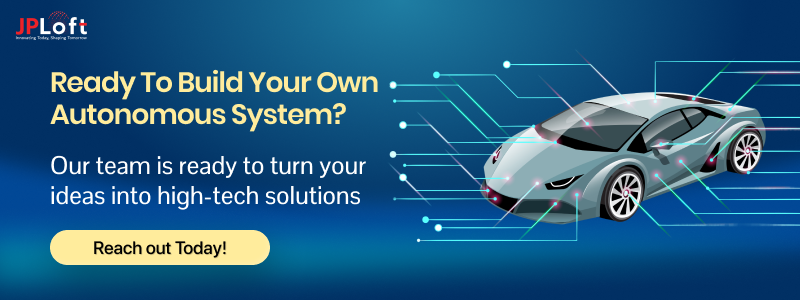
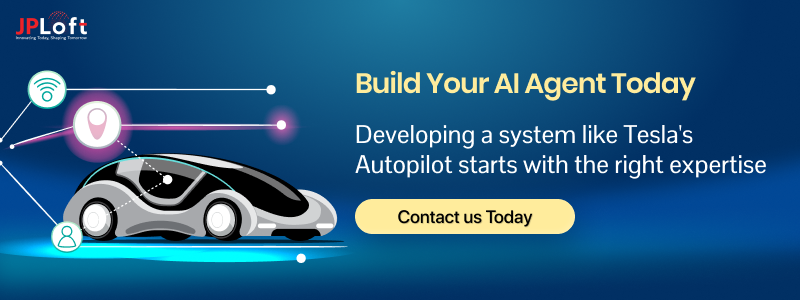

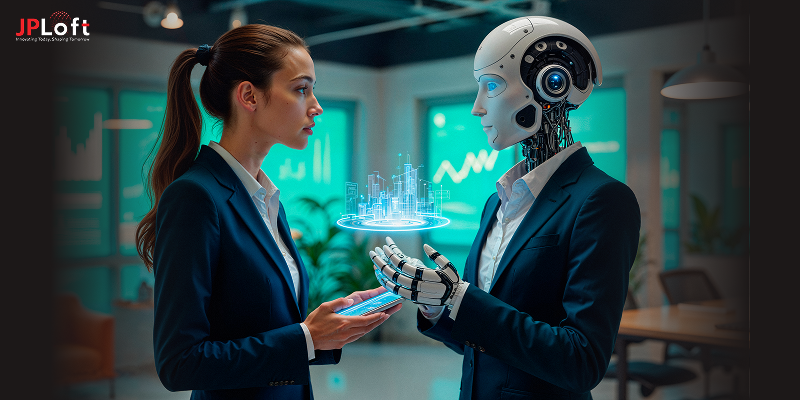
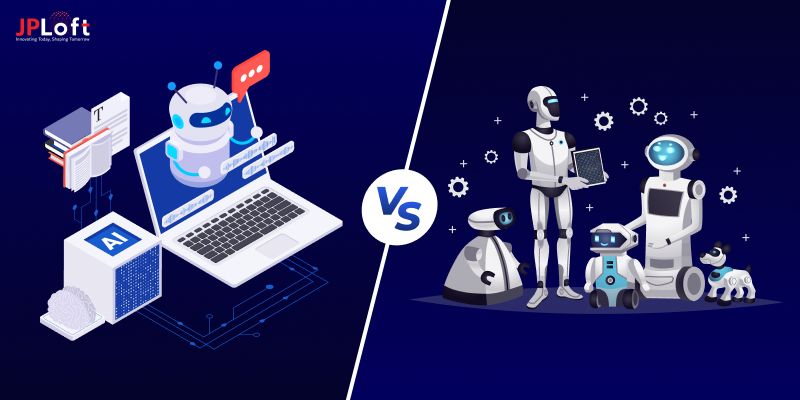



Share this blog